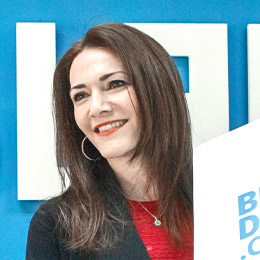So what is programmatic advertising?
““Programmatic” ad buying typically refers to the use of software to purchase digital advertising. As opposed to the traditional process that involves RFPs, human negotiations and manual insertion orders. It’s using machines to buy ads, basically.”
Jack Marshall
One may wonder…so why should I entrust a machine for this important process that will impact the communication of my brand??? Well, for one, programmatic makes the ad purchasing process more efficient. Moreover, it is with less errors, that a human may be prone to do. Technology does not replace humans, but merely undertakes some of the more mundane tasks. Such as sending insertion orders to publishers and dealing with ad tags and so on. However, a marketer still needs to optimize his / her campaigns and to plan strategies. In fact, Programmatic technology empowers marketers and respective sellers to allocate their time on better planning. It also empowers them to customize their campaigns to reach their audiences more effectively.
Real time bidding?
Often people confuse Programmatic with Real-time bidding (RTB). In fact, RTB is a type of programmatic ad buying. RTB is the process of purchasing ads via real-time auctions. Whereas programmatic software additionally allows advertisers to buy guaranteed ad impressions in advance from specific publisher sites.
Brief history on how programmatic advertising arose
Jeff Rajeck in a recent article of his, explains the history of on online advertising and how Programmatic advertising helps today.
According to Jeff, when the first banner appeared in the 90’s. It was so novel that it resulted to a very high click through rate. However, as the use of banner advertising started becoming more widely used then clients started facing the first problems and difficulties in keeping track of the performance of their banners. So, various ad serving platforms started appearing such as DoubleClick.
As the web kept growing, the next challenge that appeared was the difficulty in managing the various relationships between serving ads in various websites. In the late 90’s the first ad network was created to help brands advertise on many websites through one platform. But with the dot.com boom in that period, it was difficult for those solutions to keep up. So the likes of Yahoo and Excite emerged to index and categorize the web, but made it too fragmented. Until Google launched Adwords in 2000. Which enabled ads to appear on almost any website And then created its own ad network Adsense.
The game changer was the launch of the iPhones, followed by the Androids OS. Suddenly, the proliferation of media, websites, portals, apps, social media, smart-phones changed the way we consume content. In fact the former made it a very complicated affair. Which in effect, makes it incredibly complicated for brand managers to figure out where to advertise. And more importantly measure the ROI of their advertising efforts.
Programmatic ecosystem
Below is a diagram published by Econsultancy in October 2016, explaining the programmatic ecosystem:

According to Jeff Rajeck: “The SSPs will hide the complexity from publishers and the DSPs will do the same for advertisers. Trading desks will deliver the single point of contact experience for those who need it and first and third party data will be managed by DMPs. Analytics and optimization will be available at every node to help with ROI. In short, with such an infrastructure brands can concentrate on the message they wish to deliver and who they wish to reach, and technology will take care of the rest.”
Programmatic seems to be the most robust solution, present today. As it focuses on distributing your message and delivering it across a diverse range of devices and publishers.
Predictions on programmatic
Moreover, the predictions on programmatic are very encouraging. According to an article published on Social Times in January 2016: “66 percent of advertisers polled said they plan to increase their programmatic ad spend in 2016, reported by AdRoll. The same report revealed that 87 percent of marketers are seeing greater return through programmatic advertising compared to traditional media buying.

Other findings from the report (source: Programmatic Advertising is Skyrocketing: 66% of Advertisers Plan to Boost Ad Spend, Social Times, January 2016) include:
- 32 percent of marketers spent more than 50 percent of their budgets on programmatic in 2015
- Programmatic social ad buying is now 50 percent more popular than programmatic display for B2C marketers
- 1/3 of marketers are now using programmatic ad buying on mobile.
Well..you can decide if programmatic advertising is for you. But if it is of interest to you, and you need help with programmatic advertising do not hesitate to contact us at [email protected]. Albeit a digital agency based in Nicosia, yet we can serve you in any part of the world!




